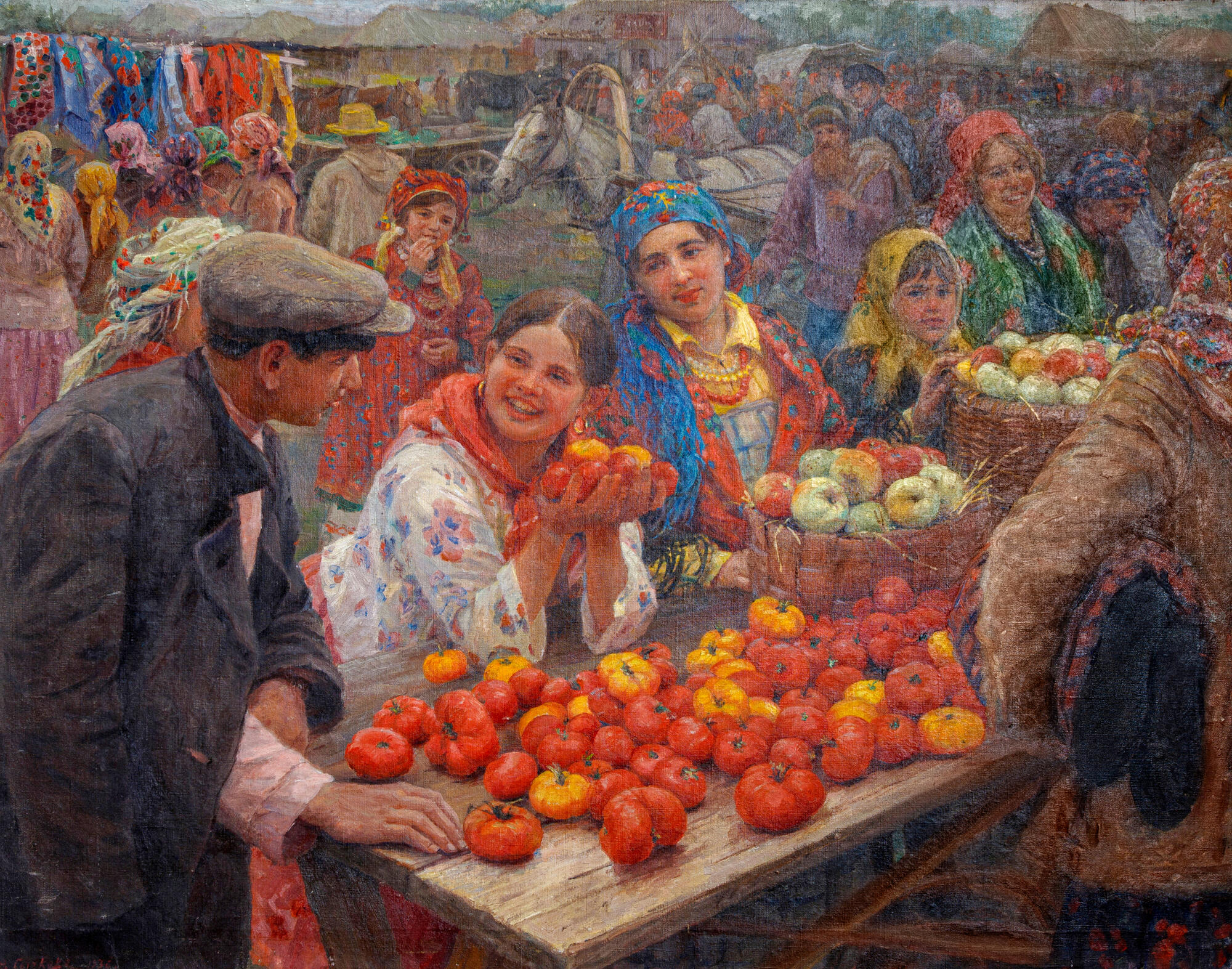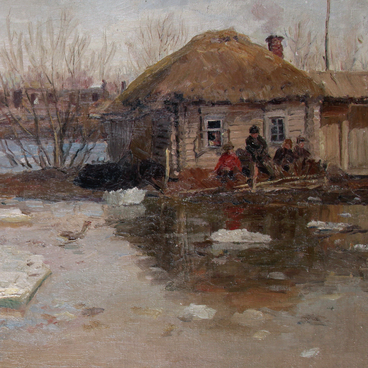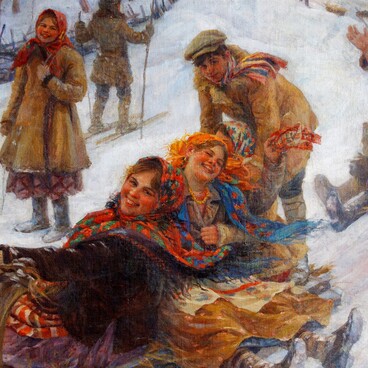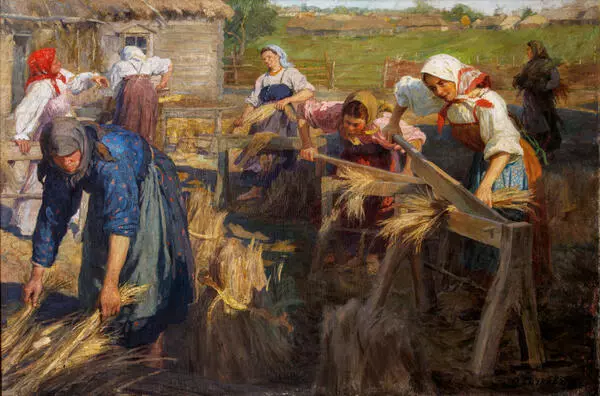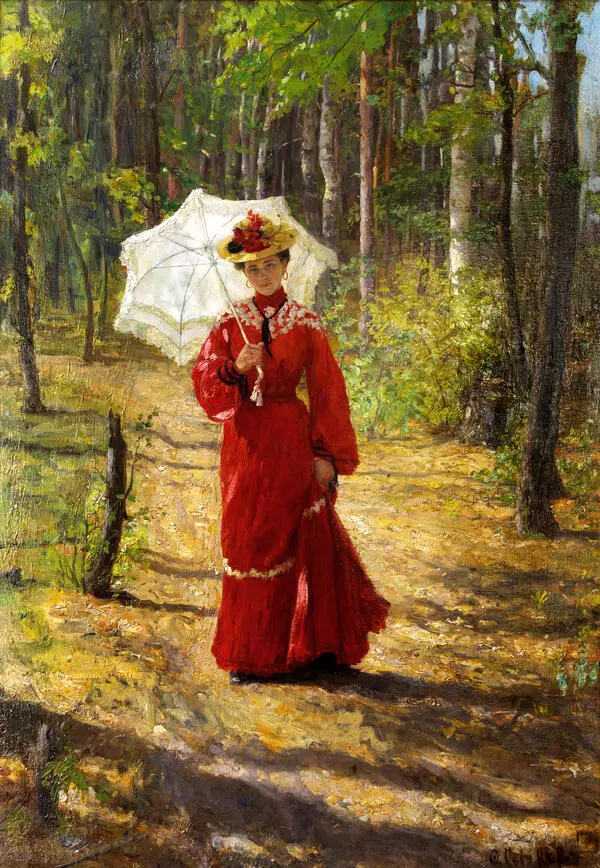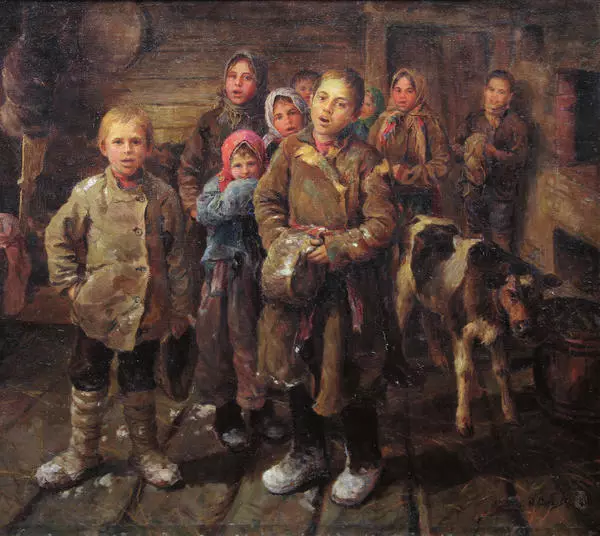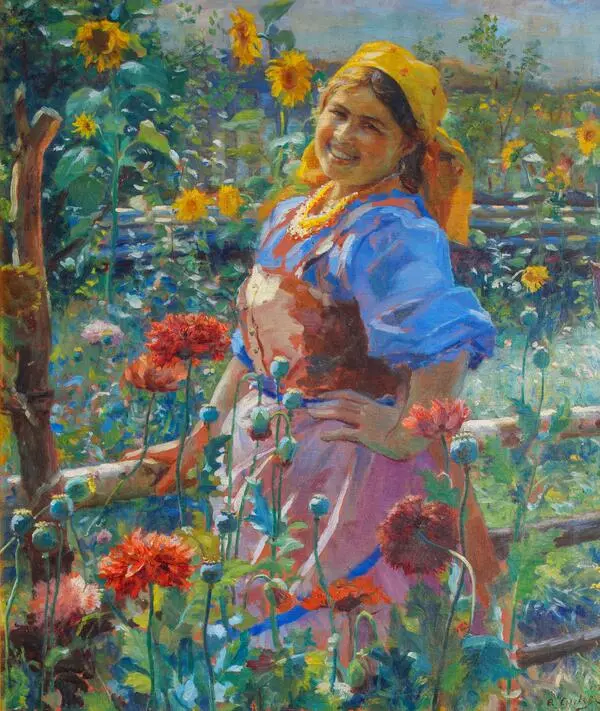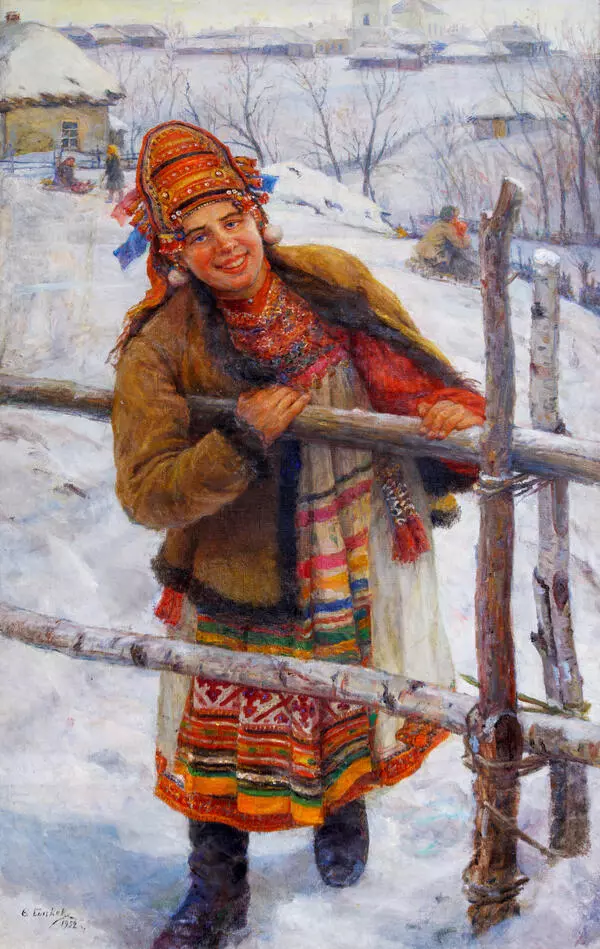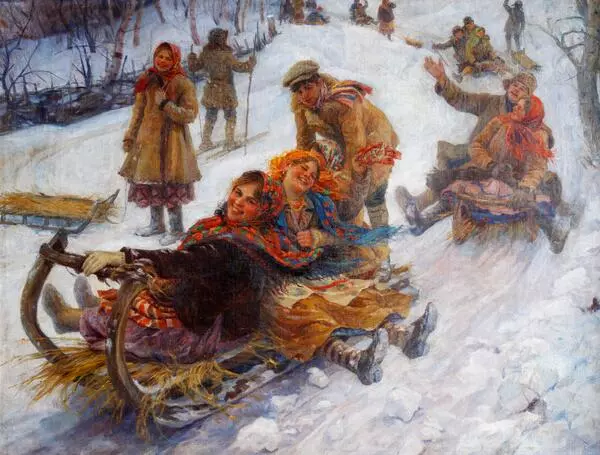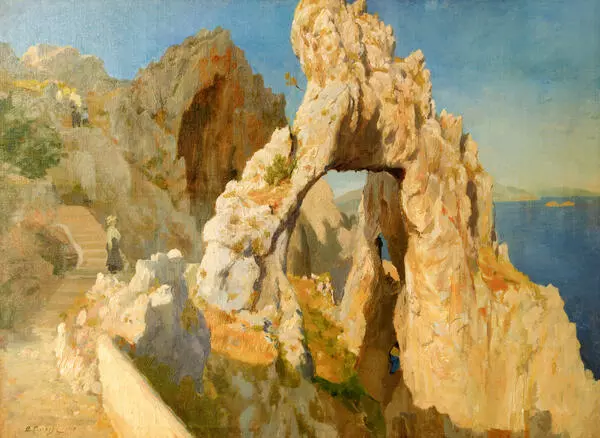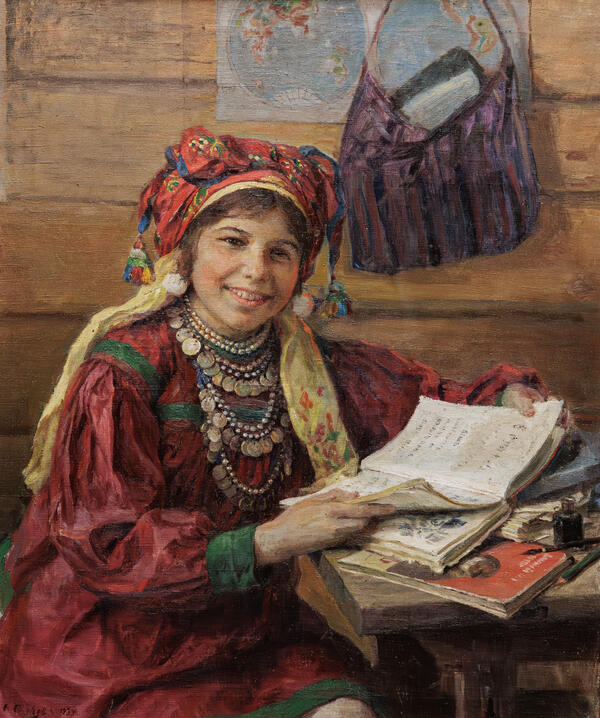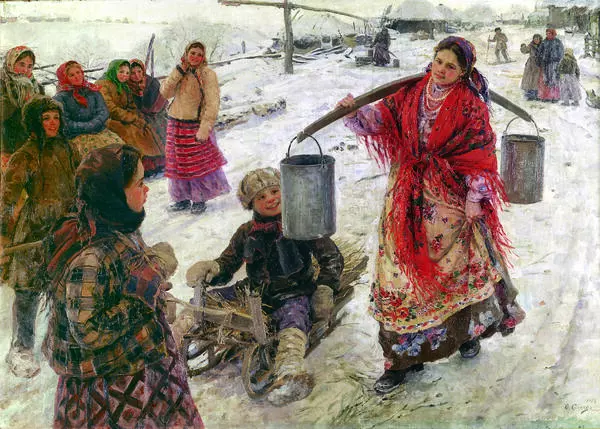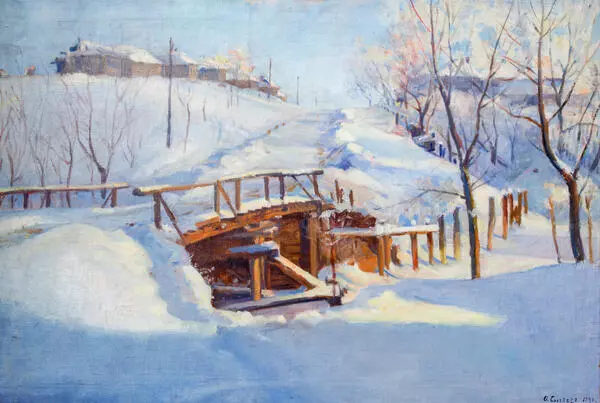Fedot Sychkov did not avoid the theme of noisy and bright fairs, popular among the Russian artists in the early 20th century. He painted ‘Kolkhoz Market’ in 1936. The master depicted a scene of acquaintance between a city boy and a village girl selling tomatoes. The young man wears a dark jacket and a cap, he leans on the counter and chats with the beautiful girl.
The artist depicted his models in the midst of the crowd. There is a young woman in a blue shawl to the right, a girl with a basket of apples next to her, and a blond merchant in a red headscarf behind. In the background, behind the main models, we can see a girl in a red Moksha dress (national Mordovian costume). The market looks crowded and lively, a horse and a rider or a peasant with a bag are seen here and there. Fedot Sychkov was particularly good at bright festive multi-figure paintings. He could build a composition so that each person was at the right place.
Regular Kochelayevo fairs provided rich material for the work. The museum has an extensive photo archive and numerous sketches of local merchants made by the artist. The artist also relied on the drafts brought from the trips along the Volga in 1914. There he depicted rows with various pottery, household utensils, and tools. Sychkov painted horse-drawn carts, domestic animals and poultry, merchants and buyers.
However, ‘Kolkhoz Market’ is devoted not only to everyday details. The artist also captured those bright characters that he saw among the common folk. His models were real people. The quiet young woman in a blue headscarf is Vera Vlasova, the niece of Lydia Sychkova, who posed for an early portrait ‘Vera with Flowers’ in 1914. To portray the blond woman in a red headscarf, the artist used a 1914 draft of Alexandra Pel, ‘A Head in Red’. The girl in a Moksha dress, who is eating sunflower seeds, is Maria Bednova née Fomenkova. She has posed for the artist more than once: she can be found on the paintings ‘The Excellent Pupil’ (1934), ‘Tobogganing’ (1937). In addition, the girl helped the Sychkovs with the work around the house. The young man was the artist’s neighbor, Pyotr Yuscchalkin.
The artist’s fellow villagers, who started posing when they were still children, remained Sychkov’s models later on.
The artist depicted his models in the midst of the crowd. There is a young woman in a blue shawl to the right, a girl with a basket of apples next to her, and a blond merchant in a red headscarf behind. In the background, behind the main models, we can see a girl in a red Moksha dress (national Mordovian costume). The market looks crowded and lively, a horse and a rider or a peasant with a bag are seen here and there. Fedot Sychkov was particularly good at bright festive multi-figure paintings. He could build a composition so that each person was at the right place.
Regular Kochelayevo fairs provided rich material for the work. The museum has an extensive photo archive and numerous sketches of local merchants made by the artist. The artist also relied on the drafts brought from the trips along the Volga in 1914. There he depicted rows with various pottery, household utensils, and tools. Sychkov painted horse-drawn carts, domestic animals and poultry, merchants and buyers.
However, ‘Kolkhoz Market’ is devoted not only to everyday details. The artist also captured those bright characters that he saw among the common folk. His models were real people. The quiet young woman in a blue headscarf is Vera Vlasova, the niece of Lydia Sychkova, who posed for an early portrait ‘Vera with Flowers’ in 1914. To portray the blond woman in a red headscarf, the artist used a 1914 draft of Alexandra Pel, ‘A Head in Red’. The girl in a Moksha dress, who is eating sunflower seeds, is Maria Bednova née Fomenkova. She has posed for the artist more than once: she can be found on the paintings ‘The Excellent Pupil’ (1934), ‘Tobogganing’ (1937). In addition, the girl helped the Sychkovs with the work around the house. The young man was the artist’s neighbor, Pyotr Yuscchalkin.
The artist’s fellow villagers, who started posing when they were still children, remained Sychkov’s models later on.
